Difference Between PERT and CPM in Project Management
Table of Contents
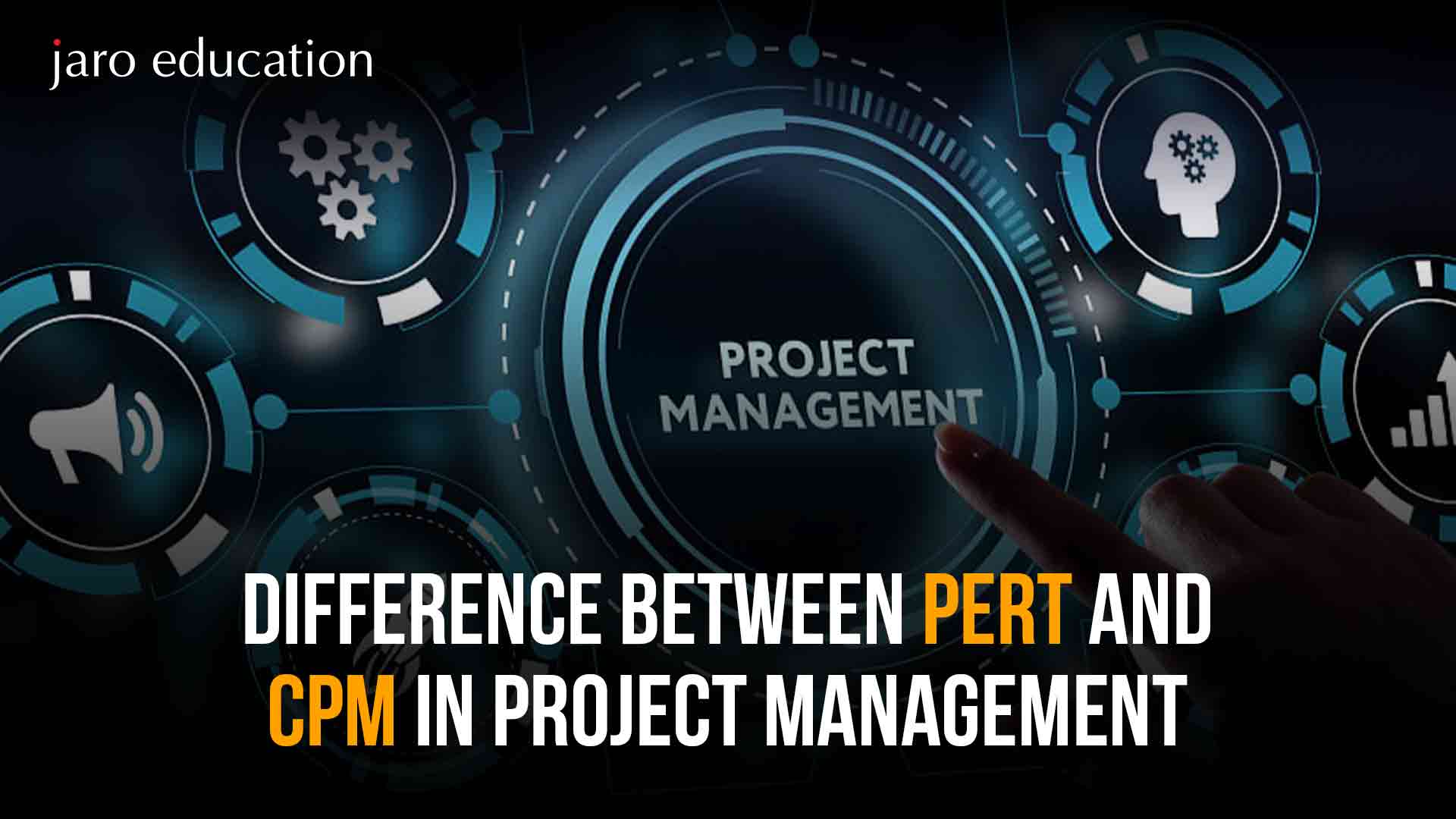
- jaro Education
- 3, August 2024
- 9:00 pm
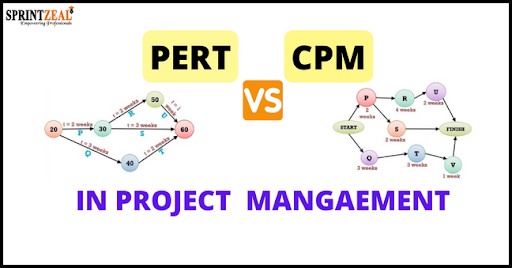
*Sprintzeal.com
Project management might sound like a serious business—and it is! But think of it as the art of making things happen. Whether it’s launching a new product, constructing a skyscraper, or planning a company event, project management ensures that all the pieces come together smoothly. It’s like being the maestro of an orchestra, guiding each instrument (or team member) to play in harmony. Understanding the difference between PERT and CPM in operations research is crucial in this process, as these tools help manage and streamline the journey from conception to completion.
Across industries, project management is a superhero without the cape. From tech startups to massive construction firms, the magic lies in planning, executing, and delivering projects on time and within budget. The best part? When done right, it makes everyone’s life easier, from the CEO to the newest intern. Knowing the difference between PERT and CPM can significantly impact the effectiveness of these efforts, as each method offers unique advantages for different types of projects.
The Role of Planning Tools in Successful Projects
Imagine setting out on a cross-country road trip without a map or GPS. Scary, right? That’s what managing a project without planning tools feels like. Effective planning and scheduling are the lifeblood of successful projects. They help you chart the course, anticipate detours, and ensure you reach your destination on time. The difference between PERT and CPM in operations research becomes evident here, as these planning tools provide distinct methods for navigating complex project landscapes.
Planning tools like PERT (Program Evaluation Review Technique) and CPM (Critical Path Method) are like your project’s navigation system. They provide a clear roadmap, highlight the critical paths, and even predict possible roadblocks. This foresight is crucial in keeping projects on track, avoiding pitfalls, and ensuring everyone knows what’s happening and when. Understanding the difference between PERT and CPM helps project managers choose the right tool for their specific needs, enhancing the chances of project success. However, firstly, the question arises, “What is PERT and CPM?” Let us aim to answer that question first.
Overview of PERT (Program Evaluation Review Technique)
Now, let’s dive into PERT—no, not the shampoo, but the Program Evaluation Review Technique. Developed in the 1950s for the U.S. Navy’s Polaris project, PERT is all about breaking down projects into bite-sized tasks and estimating the time each one will take. It’s particularly handy for projects where time is a bit of a mystery, like in research and development, where predicting exact time frames can feel like crystal ball gazing. This difference between PERT and CPM in operations research is vital, as PERT focuses on managing uncertainty and providing flexibility.
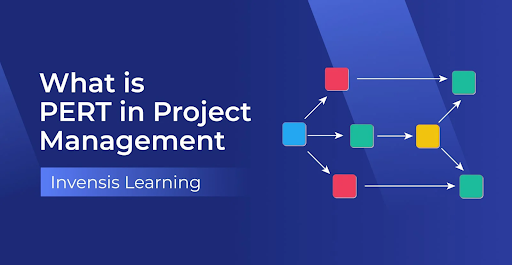
*Invensis Learning
1. Key Features of PERT
The magic of PERT lies in its use of probabilistic time estimates. It doesn’t just ask for a single time estimate; it asks for three:
- Optimistic (the best-case scenario)
- Pessimistic (the worst-case scenario)
- Most likely (the most realistic scenario)
These estimates help project managers anticipate a range of outcomes and prepare for surprises. It’s like planning for a party—you’re ready whether only a few guests show up (optimistic) or everyone brings a plus one (pessimistic). This probabilistic approach is a key difference between PERT and CPM, providing a nuanced view of potential project timelines.
2. Advantages of PERT
One of PERT’s superpowers is its flexibility. It helps in identifying the potential bottlenecks and risks early, allowing for better risk management. For projects in fields like research and development, where uncertainty is the norm, PERT’s probabilistic approach is a game-changer. It helps in setting realistic timelines and prepares the team for the unknown, making it an invaluable tool for navigating uncharted waters. The difference between PERT and CPM in operations research in this context highlights PERT’s adaptability in uncertain environments.
3. Limitations of PERT
However, PERT isn’t without its quirks. It can be complex, especially for larger projects with many moving parts. The need for accurate time estimates means that if the initial data is off, the whole schedule can be skewed. It’s a bit like building a house of cards; one shaky estimate and the structure can wobble. Nonetheless, with careful planning and good data, PERT remains a powerful tool in the project manager’s toolkit. Understanding the difference between PERT and CPM in operations research helps project managers navigate these complexities and choose the most appropriate tool for their projects.
Overview of CPM (Critical Path Method)
Next up, let’s talk about CPM or the Critical Path Method. Developed in the late 1950s, CPM emerged from the world of construction and manufacturing, where knowing exactly how long things will take is crucial. Think of it as the project manager’s stopwatch, ensuring that every task ticks along precisely as planned. Unlike PERT, which embraces the unpredictable, CPM is all about certainty. It provides a detailed roadmap with a clear focus on what needs to be done—and in what order—to complete the project on time.
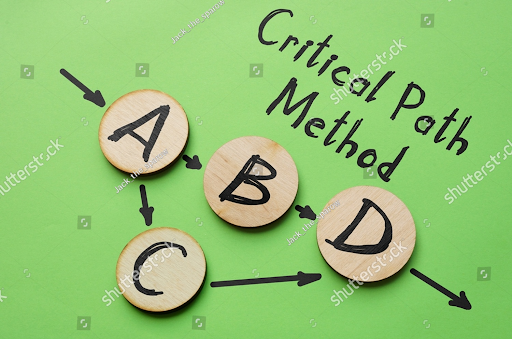
*Shutterstock
1. Key Features of CPM
CPM revolves around deterministic time estimates, which means it requires fixed, specific durations for each task. This approach makes it perfect for projects where activities are repeatable and well-understood. The method’s shining feature is the identification of the “critical path”—the sequence of tasks that determines the project’s minimum completion time. Any delay in these tasks will directly impact the project’s end date. Additionally, CPM allows for time-cost trade-offs, enabling project managers to make informed decisions about accelerating certain activities if needed, often referred to as “crashing” the project.
2. Advantages of CPM
One of the standout advantages of CPM is its simplicity. It’s straightforward to understand and implement, making it a favorite in industries like construction and manufacturing, where precise scheduling is key. CPM is also great for resource allocation, helping managers ensure that the right people and materials are available at the right times. This efficiency minimizes downtime and keeps projects moving forward smoothly.
3. Limitations of CPM
However, CPM isn’t without its drawbacks. Its reliance on fixed time estimates means it can struggle in uncertain or dynamic project environments where tasks aren’t as predictable. Additionally, CPM’s focus tends to be more on time rather than cost, which can lead to challenges if budget considerations are a primary concern. While CPM excels in structured and stable settings, it may lack the flexibility needed for projects that are more exploratory or innovation-driven.
What is the Difference Between PERT and CPM?
In project management, choosing between PERT (Program Evaluation Review Technique) and CPM (Critical Path Method) depends on the nature and requirements of the project. Here’s a breakdown of the key differences between these two methodologies:
Understanding these distinctions helps project managers choose the right tool for their specific project needs, ensuring optimal planning and execution. Recognizing the difference between PERT and CPM in operations research can significantly impact how projects are managed and executed successfully.
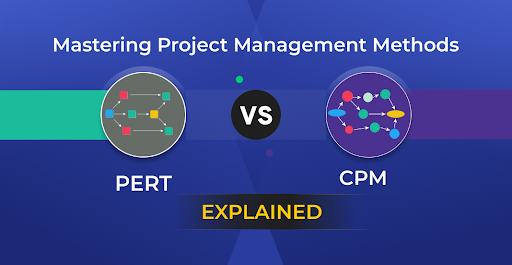
*Invensis Learning
| Factors | Differences between PERT and CPM |
|---|---|
| 1. Approach to Time Estimates | One of the most significant differences between PERT and CPM lies in how they handle time estimates. The difference between PERT and CPM is that PERT uses a probabilistic approach, providing three-time estimates for each task (optimistic, pessimistic, and most likely), which helps in managing uncertainty. On the other hand, CPM uses deterministic time estimates, requiring fixed durations for all activities. This fundamental difference between PERT and CPM in operations research affects how project timelines are planned and adjusted. |
| 2. Application of pert and CPM and Use Cases | The difference between PERT and CPM extends to their application of pert and CPM and use cases. PERT shines in research and development projects, where the path forward can be unclear and time estimates are uncertain. It’s the tool to use when exploring new territory. In contrast, CPM is ideal for projects with repetitive tasks and well-defined processes, such as construction and manufacturing. Here, the goal is to stick to the schedule and manage resources efficiently. The choice between PERT and CPM in operations research largely depends on the nature of the project and its specific requirements. |
| 3. Focus on Time vs. Cost | Another critical distinction is their focus. The difference between PERT and CPM is evident in their emphasis: PERT focuses on managing time variability and assessing the impact of potential delays, making it invaluable for projects where timing is uncertain. CPM, however, leans more towards cost efficiency and managing the project’s timeline with precision. It provides a clear picture of which tasks are critical and must be completed on time to avoid delays. Understanding this difference between PERT and CPM in operations research can guide project managers in prioritizing either time or cost, depending on their project’s needs. |
| 4. Flexibility and Complexity | In terms of flexibility and complexity, the difference between PERT and CPM becomes apparent. PERT offers more adaptability, which is useful in dynamic and uncertain projects. However, this comes with a higher complexity level, requiring careful analysis of multiple time estimates. CPM, while simpler and easier to use, is less flexible due to its reliance on fixed timelines. It suits projects where the process is stable and well-understood. The difference between PERT and CPM in this regard affects how project managers handle project complexity and adaptability. |
Real-World Applications and Case Studies
The difference between PERT and CPM in operations research is also highlighted through their real-world application of PERT and CPM. The PERT has been a go-to tool in industries like aerospace and defense, where projects are complex and involve significant uncertainty. For instance, NASA has utilized PERT for planning and executing space missions, where precise timelines are challenging to determine but crucial for success.

*www.history.in
Conversely, CPM has proven invaluable in construction and infrastructure projects, where the sequence of activities and their durations are well known. For example, major construction projects, such as building skyscrapers or bridges, often use CPM to ensure that every phase is completed on schedule and within budget. This practical difference between PERT and CPM in operations research showcases their effectiveness in different project environments.
Applications of PERT:
- Research and Development Projects: PERT is most effective in projects like Research and Development in which the duration of tasks is very uncertain. The method predicts the time frame of the project with reference to various scenarios such as optimistic, pessimistic, and most likely times.
- Large and Complex Projects: The PERT application is very common in projects requiring a large number of activities interdependent. It also provides information on how to measure project timelines well and find critical tasks that need to pay attention to.
- Government and Defense Projects: Of course, because it was originally invented by the U.S. Navy, government and defense projects would normally use PERT, where it becomes difficult to predict the length and complexity of the tasks.
- Construction Projects: PERT is similarly applied in large-scale construction projects, wherein uncertainties related to the weather, resource availability, and completion times exist.
Applications of CPM:
- Construction Projects: CPM is most widely applied in construction projects where activities tend to have fixed durations and depend on well-defined relationships. The process will enable project managers to have optimal resources and effective temporal use of the project.
- Manufacturing: In the execution of manufacturing projects, where tasks such as assembling lines, schedules for productions and breakdown maintenance are well-defined, there is a need for close coordination of activities. CPM is very effective for that.
- Software Development: On the other hand, CPM can be effectively used when predictable development processes are involved and the main goal is to achieve the project within its schedule and optimal resources.
- Event Planning: CPM can also be utilized in event planning, where each task (such as securing permits, booking vendors, setting up venues) has a fixed duration, and the aim is to identify and manage the critical path.
PERT and CPM in Operations Research
Operations research (OR) is a discipline that applies mathematical models, statistical analysis, and optimization techniques to decision-making processes. PERT and CPM in operations research have a great emphasis on operations research, project scheduling, resource management, and optimization.
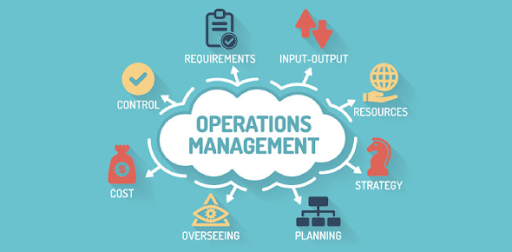
* ProProfs
PERT in Operations Research
- Risk Analysis: PERT also collects and saves probabilities, which can help assess the impact of risks and uncertainty on project completion times. By calculating expected time and estimating different possible conditions, OR experts can devise risk management strategies.
- Decision Making: In operations research, by PERT, project decision-making can be framed concerning uncertain outcomes, thus providing the basis for management decision-making in terms of the best, worst, and most likely scenarios.
- Simulation: PERT is used in Monte Carlo simulation modeling for the representation of the behavior of complex systems under uncertain conditions, thus making it a part and parcel of operation research in risk analysis.
CPM in Operations Research
- Optimization: CPM is one of the operations research techniques to shorten project duration and resource usage. The more it focuses on critical path analysis, the more it helps to get based on critical tasks that would require some added resources or attention to avoid project delay.
- Resource Allocation: CPM manages optimal allocation of manpower, machinery, and materials in order to get the work done on time and make efficient use of available resources.
- Cost Minimization: Integrating into CPM in most cases with cost analysis, operations research techniques can be used to find the most cost-effective way of constructing schedules while ensuring that the system works as efficiently as possible.
Choosing Between PERT and CPM
Choosing between PERT and CPM in operations research depends on various factors, including the type of project, the level of uncertainty, complexity, and resource constraints. If you’re dealing with a project where tasks are not well-defined and time estimates are uncertain, like in R&D or new product development, PERT’s probabilistic approach can be a lifesaver. On the other hand, if your project involves repetitive, well-understood tasks, like in construction or manufacturing, CPM’s deterministic scheduling can help you manage resources more effectively and keep things on track. The difference between PERT and CPM in these scenarios guides the decision on which methodology to apply.
1. When to Use PERT
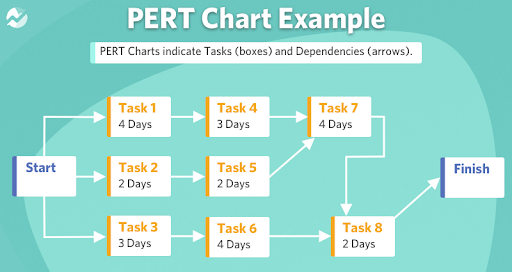
*Nifty
PERT is ideal for projects characterized by high uncertainty and where time estimates can vary significantly. It’s particularly useful in scenarios like research and development, where you’re often exploring new territory and facing unknowns. PERT’s flexibility in handling uncertain timelines makes it an excellent choice for planning and evaluating potential risks. Understanding the difference between PERT and CPM in operations research in this context helps teams prepare for various outcomes and uncertainties.
2. When to Use CPM
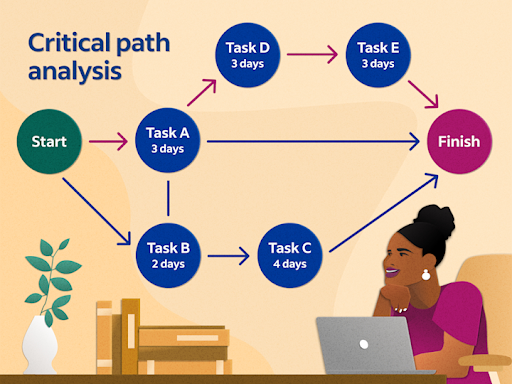
*Indeed
CPM shines in projects with well-defined activities and predictable timelines. It’s the go-to method for projects where timing is critical and delays can lead to significant costs, such as in construction, infrastructure, and manufacturing. CPM’s ability to identify the critical path—those essential tasks that must be completed on time to avoid delaying the entire project—makes it a powerful tool for ensuring projects are completed on schedule and within budget. The difference between PERT and CPM in this situation highlights CPM’s effectiveness in managing projects with clear and predictable timelines.
Enhancing Project Management Skills With Jaro Expertise
In the ever-evolving field of project management, staying ahead requires continuous learning and professional development. Advanced training and education not only enhance your skill set but also keep you updated on the latest methodologies and tools. This is crucial for tackling the increasingly complex challenges faced in project management across various industries.
Jaro Education is indeed the best, most trusted online higher education company in India. This Edtech company is the pioneer of the executive education industry, established in 2009, and has always been the first mover in the online executive education space. It aims to develop entrepreneurs and professionals from entry-level to C-Suite in every field and industry, offering executive education programs. Established as an organization that has changed the face of online education in India, Jaro Education has transformed the careers of over 3 lakh professionals in more than 15+ years across its more than 30 learning centres throughout India.
For those looking to deepen their understanding of project management techniques like PERT and CPM, advanced programs such as the Executive Programme in Operations Management and Analytics by CEP, IIT Delhi are invaluable. Offered by leading institutions, these programs cover a wide range of topics, including comprehensive project management methodologies, resource optimization, and advanced analytical techniques. This training equips professionals with the knowledge and skills needed to excel in managing complex projects.
Conclusion
In summary, PERT and CPM in operations research are both powerful tools in the project manager’s toolkit, each with its strengths and best-use scenarios. PERT is your go-to for projects filled with uncertainty and variability, offering flexibility and improved risk assessment. In contrast, CPM is best suited for projects where precision and efficiency are paramount, providing clear timelines and resource allocation strategies.
Selecting the appropriate project management tool is crucial for the success of any project. Understanding the unique features and application of PERT and CPM in operations research helps project managers choose the best approach for their specific needs, ensuring that projects are completed on time, within scope, and within budget.
To stay competitive and effective in project management, it’s essential to continue learning and developing your skills. Exploring advanced courses and certifications, such as the Executive Programme in Operations Management and Analytics, can provide valuable insights and techniques to enhance your project management capabilities. Whether you’re new to the field or a seasoned professional, ongoing education is the key to success in navigating the complexities of modern project management.
Frequently Asked Questions
PERT is a project management tool used to analyze and represent the tasks involved in completing a project. It focuses on time and identifies the minimum time required to complete a project by considering uncertainty in task durations.
CPM is a project management technique used to identify the longest sequence of dependent tasks (critical path) and determine the shortest time to complete a project. It focuses on the optimization of the project schedule.
PERT focuses on uncertain project durations and uses probabilistic time estimates (optimistic, pessimistic, and most likely).
CPM focuses on the fixed time estimates for project tasks and determines the critical path based on the longest duration.
A PERT chart typically consists of:
- Nodes (representing project milestones or tasks).
- Arrows (representing the relationship and dependencies between tasks).
- Time estimates (optimistic, pessimistic, and most likely durations).









